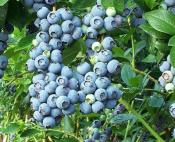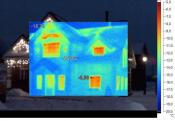Search
Login
Recommended
Cherries in the garden
Cherry blossoms in early spring - it is very beautiful, the garden is like a bride in a white pink outfit who needs to buy bedclothes in cherry tones. In the summer, cherry berries are a treat for children and adults. In winter, this is a delicious compote and jam.
Content
- General information
- The healing properties of cherry berries
- Varieties of cherries
- Soil for cherry
- Crop propagation method
- Propagation of cherry by grafting
- Growing stock for vaccinations
- Planting seedlings in the ground
- The method of planting seedlings
- Crown formation video
- Frost Frost
- Cherry disease
- Cherry Pests
General information
In Russian gardens, cherry is one of the leading places.
The value of this berry is early maturity, wonderful taste, early ripening, suitability for processing.
Cherry fruits contain a large amount of sugars, organic acids, a whole complex of P-vitamins, contains a lot of iron, folic acid, riboflovin.
The healing properties of cherries
The use of fresh cherry berries is the way to healthy vessels and the cardiovascular system.
Traditional medicine makes extensive use of the fruits of cherries in the treatment of anemia, inflammatory diseases of the respiratory tract and the cardiovascular system.
Widely used decoction of stalks and cherry leaves for the treatment of hypertension, urolithiasis, rheumatism.
It is also an excellent hemostatic and diuretic.
Varieties of cherries
When growing cherries, of great importance for gardeners, is the acquisition of regionalized and promising varieties of cherries.
Of particular note is the ability of seedlings to adapt to local conditions for survival in winter.
The fact is that cherry trees have a shallow rest.
With sharp fluctuations in temperature, especially in the second half of winter, their flower buds freeze out.
This is the main reason for the irregular fruiting of cherries.
For the Central Strip of Russia and Central Black Earth, the following varieties are recommended:
Zhukovskaya
Vladimirskaya
Lyubskaya
Youth
Such varieties of cherries feel good: Effective, Crimson, Surprise, Tambovchanka.
New varieties are constantly appearing and if you want to buy promising seedlings, stay tuned.
Soil for cherry
Important! Cherry does not like low relief, grows well in high places.
The soil should be well aerated; this plant loves warmth.
If you are planting a garden in low places, check the depth of groundwater in the spring.
In spring, water should be no closer than 1.5-2 meters to the surface.
Cherries love lightly loamy, light loamy, gray forest, sod-podzolic soils.
The soil should be sufficiently moisture-resistant and breathable.
For the cultivation of cherries, heavy - dense - clay and deep sand soils are of little use.
Carbonate chernozems contribute to the infection of cherries with chlorosis.
Crop propagation method
Many amateur gardeners want to grow cherry varieties already known to them.
For such cases, the best way is to grow them yourself.
The oldest method, the propagation of root varieties of cherries - overgrown.
With this method, the appearance of a basal offspring is expected, in the spring it is separated and transplanted into a prepared pit in advance, in the fall.
We will describe in more detail about such a landing below.
Propagation of cherry by grafting
Cherry is a culture with poorly acclimated grafting (grafting) eyes; they often die in winter.
The most successful vaccination dates are from the third decade of June to the first decade of July.
Seedlings of local resistant varieties of common cherry - the best stock.
Growing stock for vaccinations
For growing stocks, seeds are collected from ripened fruits and only in a cold way.
These seeds, after washing, without drying, are mixed with river sand and stored at a temperature of + 10 + 15 degrees Celsius.
Cherry seeds have a stratification period of 150 to 200 days under certain conditions.
For stratification, the seeds are kept in the basement, or in the lower part of the refrigerator at a temperature of + 5 + 6 degrees Celsius, periodically moistening the sand in which the seeds of the cherry are stored.
The last days of stratification, it is good to store seeds under snow at a temperature of 0 degrees Celsius. There is another way to grow stocks.
For this, seeds are scattered, 3-4 cm. They are covered with soil, they are covered with 2 cm of mulch on top.
After germination of seedlings, the soil is loosened, seedlings are fed and watered.
Planting seedlings in the ground
In the spring of next year, stockstock seedlings are planted in prepared soil, previously enriched with nutrients.
Seedlings are planted at a distance of 15-18 cm from each other and 50 cm between rows. Over the season, rootstocks develop a good root system.
Thus, you have grown stock, you can safely begin vaccination in the traditional way or in the butt.
The method of planting seedlings
Cherries can only be planted in early spring until the buds are swollen. But the pits are 40-50 cm deep. and a width of 70-80 cm., for planting cherries, prepared in the fall.
When planting a seedling, in the spring, a mixture of one bucket of compost or rotted humus, 400 grams of superphosphate, 50 grams of potassium chloride, 400 grams of wood ash and 500 grams of lime is added to each pit.
Important! The root neck, a cherry seedling, should be at ground level. Watering daily, a bucket of seedlings and mulching. After planting, for better survival, cut the cherry, remove the leaves.
The lower part of the stem, 30-40 cm from the surface of the earth, should be free from side shoots.
Above 40 cm., If there are lateral shoots, leave 3-5 branches, leaving a distance between them of up to 10 cm.
Extra branches are cut into a ring.
Important! The central conductor should always lead, it is always cut off above the side branches by 20-25 cm. The crown of cherry is formed within 4-5 years.
Crown formation
Cherry seedlings have two types of crowns: bushy and tree-like.
At the bushy crown 10-15 skeletal branches are left.
A tree crown should have up to 5-8 branches.
During formation, for the purpose of subordination, skeletal branches are shortened.
Using pruning, you can translate branches that are directed upward to lateral growth.
On the central trunk, the removal of large skeletal branches is undesirable; it is better to shorten it to the side branch.
In tree-like cherries, when they reach 3 meters, the conductor is cut to the last lateral branch.
In bushy varieties of cherries, this does not need to be done. Pruning is carried out in early spring, before the swelling of the kidneys.
Important! Cherry harvest is formed on the growth of last year, i.e. harvest depends on growth activity.
With a good growth of up to 45 cm, during pruning near bush trees, it is better to use thinning of the crown.
In tree-like branches, it is possible to shorten branches even in annual branches.
Such pruning enhances branching and stimulates the development of bouquet branches.
Gradually, over the years, there is a decrease in growth to 15 cm, the branches are exposed, in this case, anti-aging pruning is used to the point where the lateral branching has stopped.
Frost Frost
At cherry trees, you can find frost-holes, which are accompanied by gum-dropping.
To prevent such damage to the stem, it is necessary to select winter-hardy varieties, a good planting site, whitewash to prevent sunburn, and insulate the seedlings with needles or thick paper.
Cherry disease
Wounds on the stem (frost bouts) must be treated.
To do this, carefully remove the dead bark with a disinfected knife, disinfect the wound with copper sulfate (100 g. Per 10 liters of water), cover it with garden var or a mixture of clay and mullein.
A dangerous disease of cherry planting is coccomycosis, gray fruit rot.
As a precaution, it is necessary to spray the soil and trees before budding 3-4% solution of copper sulfate or Bordeaux liquid.
Cherry Pests
The most common pests are cherry elephant and cherry aphid.
For their destruction, it is necessary, during the season, to perform 2-3 sprayings with drugs to combat leaf-eating and leaf-sucking insects.





